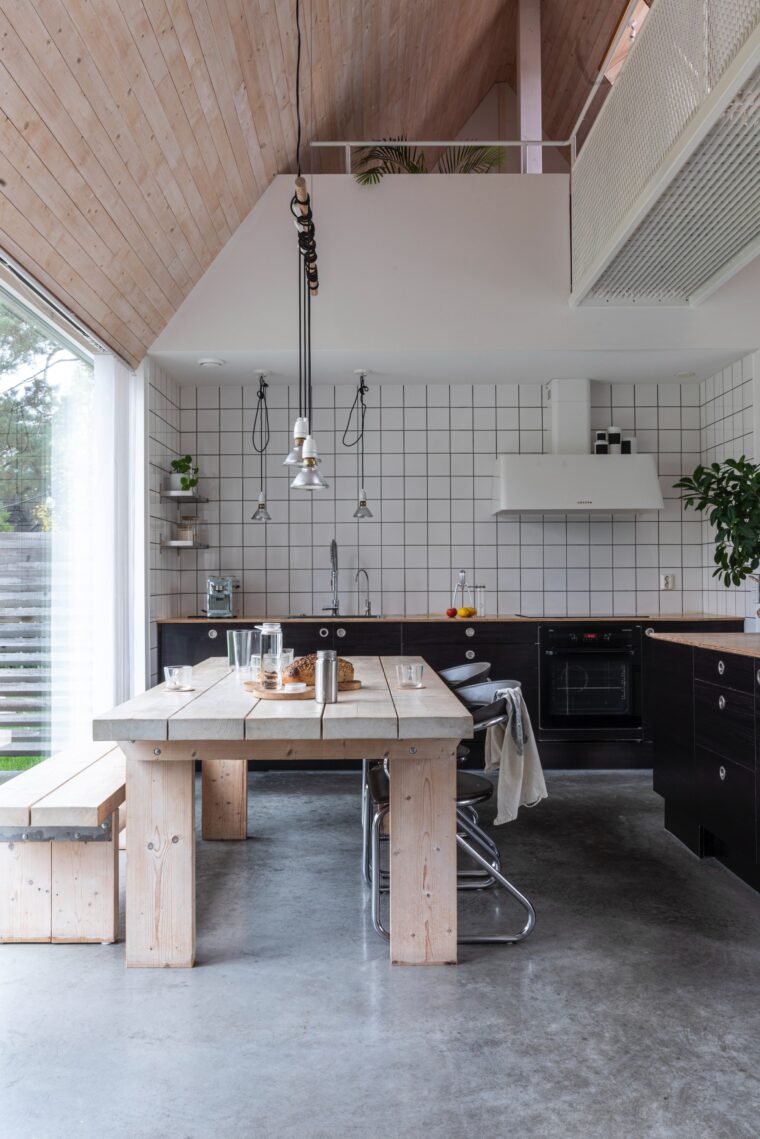
The aesthetic appeal of a room is defined by the harmonious blend of its various elements — furniture, wall colors, architectural features and, of course, flooring. A thoughtful selection and proper integration of these aspects can transform a room from ordinary to extraordinary.
Assessing the Existing Room Aesthetic

Existing Furniture
Consider your furniture, focusing on its style, color and material.
Wall Colors
Pay attention to your wall colors, as they significantly affect how the room feels and looks.
Architectural Features
Do not overlook the architectural features, like fireplaces, moldings or exposed beams that add unique character to the room.
Choosing the Right Flooring Material

Material Options
The right flooring material enhances your room’s aesthetic appeal while also offering durability and comfort. Here are some options:
Hardwood

This elegant, timeless option adds warmth and increases property value. It suits traditional, rustic and modern aesthetics.
Laminate

Laminate offers the look of hardwood, tile or stone but with greater resistance to wear and stains. It’s ideal for high-traffic areas.
Vinyl

This resilient, cost-effective choice offers a variety of styles and colors and is perfect for utility rooms, bathrooms and kitchens.
Tile

Tiles are durable and easy to clean, suitable for bathrooms or kitchens. They come in numerous designs, colors and materials to ensure you get the look you want.
Carpet

Carpet easily adds comfort to any space with its soft and cozy qualities. Carpets work well in bedrooms or living rooms and are available in different colors and textures to suit your needs.
Concrete

A contemporary choice, concrete adds a sleek, industrial appeal. It’s durable, versatile and easy to maintain. It can be left natural with just a sealer or stained for more modern tastes.
Factors to Consider
When choosing your material, consider factors like foot traffic, room purpose, budget, maintenance and, crucially, its ability to harmonize with your room’s aesthetic.
Harmonizing Colors and Patterns
Understanding Color Coordination
The interplay between flooring and room colors can significantly impact your aesthetic. By understanding color coordination, you can create impressive effects.
Color Schemes
Color schemes are planned combinations of colors used to achieve a specific design look and feel. They usually consist of two or more colors that look appealing together and help to create balance in a design. Here are some basic types of color schemes:
Complimentary
Use colors that are opposite each other on the color wheel, such as blue and orange, to create a striking and energetic appearance.
Analogous
Create a serene and comfortable design by using colors that are next to each other on the color wheel, such as red, orange and yellow.
Monochrome
The design includes multiple variations of a single color, which results in a stylish and refined look.
Transitioning and Flow
Moving elegantly from one design element to the next is what gives a room its flow. In this section, we will explore how to seamlessly transition from one room to another and from one style or color to another to create a pleasing and unified aesthetic.
Transition Methods
Thresholds
Thresholds provide a clear, visual demarcation between different rooms or sections of a house, that creates a transition from one space to another. For example, a wood threshold might separate a carpeted living room from a tiled kitchen to define the individual identities of each space.
Molding
Molding is perfect for transitioning from one type of flooring to another, especially when the floor materials have different heights. Common types of floor moldings used for transitions include T‑molding and reducer molding.
T‑molding is used when two-floor surfaces are at the same height, often between rooms or in doorways.
Reducer molding is used when there’s a height difference between the floor surfaces in order to create a smooth ramp from the higher floor to the lower one.
Some other options include:
Base molding
Crown molding
Chair rail molding
Window and door molding
Moldings provide a stylistic connection that subtly indicates changes while still maintaining a sense of balance and harmony. Whether you’re moving from one type of flooring to another, changing your wall treatments or blending different décor styles, appropriately chosen moldings can create a smooth transition and elevate the overall look of your home.
Pattern Matching
Pattern matching is a design principle that can help achieve a consistent, coordinated style in a room or throughout a home. To achieve this, patterns are carefully selected to complement each other and create a cohesive look.
Repeating Patterns
When you repeat a pattern or motif from one room or area to another, you can create a visual link between these spaces.
Coordinating Colors
Patterns don’t have to be identical to match. Using different patterns that share the same color scheme can also create a sense of unity.
Scale Variation
You can use different scales of the same pattern to create a sense of variety while still maintaining cohesion. For example, large-scale floral drapes in a living room could transition into small-scale floral wallpaper in the hallway.
Textural Patterns
Patterns aren’t limited to colors and shapes; they can also involve textures. For instance, a herringbone pattern in a hardwood floor could transition into a herringbone tile backsplash in the kitchen that ties the two areas together through the shared pattern.
Patterned Transitions
In some cases, patterns can be used directly in the transition areas themselves. For example, a patterned tile threshold could be used to transition from a hardwood floor to a tile floor, visually bridging the two different flooring materials.
Pattern matching is both an art and a science that requires an understanding of color, scale, repetition and variety.
Additional Aesthetic Concerns

Balancing Texture and Material Consistency
Strive to balance the texture and material consistency throughout the room. An overly sleek room can appear cold while an excessively textured room might seem chaotic.
Incorporating Rugs and Floor Coverings
Incorporate rugs and floor coverings to add warmth, color and texture. They can anchor furniture groupings, define areas or soften hard surfaces.
Consider Restaining Furniture and Accent Walls With ZAR® to Match New Flooring
To truly tie the room together, consider re-staining your furniture and accent walls to match the new flooring. This is where ZAR Interior Oil Base Stain comes in. ZAR is an oil-based stain filled with color that gives a deep hue with just a single application. Its thick texture ensures easy application and produces a polished finish. It’s particularly effective on woods that are typically challenging to stain, such as alder, pine, birch and maple.
Work with ZAR to Match Furniture and Accent Walls with New Flooring
If you want to create a harmonious space, you can use ZAR products to help you achieve your vision. Our stains are available in a variety of colors that make it easy to match your furniture and accent walls with your new flooring.
To discover the ideal stain for your room makeover, find the store nearest you today!




